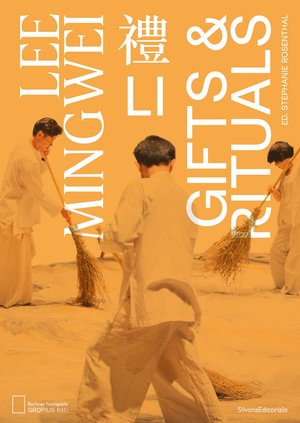Exhibition catalogue, Rome, Villa Borghese, 30.10.2019-2.2.2020
• February 2020
Valadier. Splendor in Eighteenth-Century Rome
Author: Various Authors
Publisher: Officina Libraria
Translation languages: ita > en
Translators: Jeremy Carden per Il Nuovo Traduttore Letterario
This is the catalogue of the major exhibition held in the prestigious setting of Villa Borghese and dedicated to Luigi Valadier, the most celebrated Italian cabinet-maker, foundryman and goldsmith of his time and one of the leading figures in the cultural climate that flourished in Rome in the mid-18th century.
The volume includes a series of essays by leading art historians and illustrated descriptions of precious works of art on display in the exhibition. Translating this kind of project requires expertise in a specialised art-historical language, and also entails a considerable amount of research. To give you an idea, here is an excerpt from the catalogue of the works of art.
Luigi Valadier
Columns with Festoon and Bucrane Decoration, 1780
Granite, macrocrystalline white marble, gilded, embossed, and chased bronze; 83.5 cm (h)
Rome, Galleria Borghese, inv. CCVa, CCXIIIa, CCLVIIa, CCLXIVa
(by Marina Minozzi)
The four column shafts are topped by a cymatium in white marble, decorated with a gilt bronze festoon. The upper band and the base, also in white marble, are separated from the shaft by convex molding consisting of embossed gilt metal lamina applied onto mortar. The upper one has an ovule motif, while the one next to the join with the base is embellished by a ribbon entwined around a slender rod and punctuated at intervals by a small punctiform relief. The applied frieze in the upper band comprises a festoon held by ribbons tied to the horn of a bucrane and passing through three elegant pateras, recalling the ancient symbolic value linking the two elements to ancient sacrificial rites. The pateras are applied in such as way as to cover the fixing points of the three sections in which the column was made. The flowers and fruits are in high relief: pomegranates, pears, lemons, interspersed with irregular leaves, alternate, and are treated differently to achieve surface textures with varying degrees of roughness. In the central position is the bucrane, from which a pleated ribbon runs all along the festoon. As a whole the modelling recalls the one applied to the fireplace realized by Luigi Valadier and Carlo Albacini for Penrice Castle (c.1773), with the exception of the bucrane motif, which recurs frequently in the artist’s works.
In 1780 a substantial payment of four hundred scudi was made to Valadier as “the sum thereby agreed with His Excellency the Master for gilt metal trimming and ornaments placed on 16 small granite columns, which serve as pedestals for the marble busts situated in the gallery of the palazzo of His Excellency in Villa Pinciana” (González-Palacios 1993a, I, pp. 219, 250, no. 13). According to the project prepared by Antonio Asprucci, twelve busts were placed around the so-called Gallery of the Emperors on “towers of rare blackish Oriental granite,” as they are described in the Sculture del palazzo della villa Borghese detta Pinciana (Visconti 1796, I, p. 22) and depicted in the drawing that Charles Percier did of the room around 1790 (see the essay by Coliva, fig. 10).







